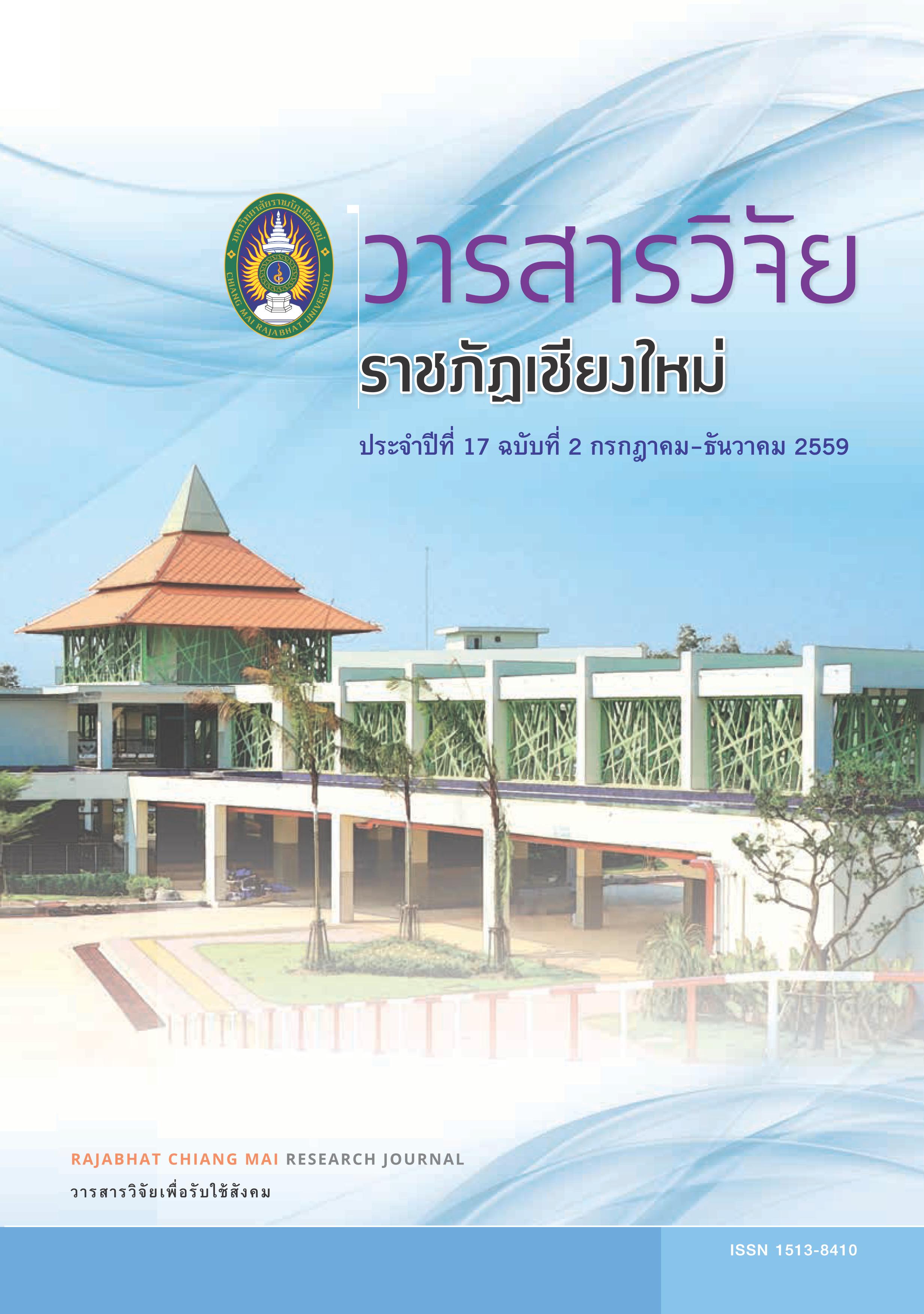THE PROMOTION OF CULTURAL TOURISM SUSTAINABILITY: CASE STUDY OF TAI LUE CULTURE
DOI:
https://doi.org/10.14456/rcmrj.2016.95161Keywords:
Promotion, Cultural Tourism Sustainable, Tai Lue Culture, การส่งเสริม, การท่องเที่ยวเชิงวัฒนธรรมอย่างยั่งยืน, วัฒนธรรมไทลื้อAbstract
The objectives of this study were: to examine cultural development patterns of Tai Lue communities; to study cultural preservation model for sustainable development of this ethnic group; and to assess the development model of cultural preservation. The study was based on qualitative research method in Doi Saket district, Chiang Mai province, covering four villages, namely Luang Nuea, Luang Tai, Pa Kha, and San Pong. The key informants consisted of the community member, tourist and stakeholders involved in organizing cultural activities in the four communities. The obtained data were analyzed by structural-historical development approach, content analysis, and inductive method. The ndings of the study are summarized as follows: The historical development of the Tai Lue ethnic group has been passed down from generation to generation. It can be evident from their livelihoods, societal activities, and community rules and regulations. The cultural preservation patterns of this tribal group have evolved and been modied in accordance with socio-economic factors. Cultural activities are changed on an annual basis due to tourism trends in the age of globalization. However, its cultural identities expressed through traditional festivals, lifestyles, and ways of life were adopted to promote cultural tourism in the communities. The development of the preservation model was carried out through the process of meaning creation reected through cultural symbols relating to tourism. The symbolic meaning creation was based on the needs to maintain its culture by using tourism as a tool for cultural dissemination. In addition, the ethnic group has clearly expressed its symbolic identities distinctively without changing cultural identities. The assessment of the preservation model was based on tourism management, which aims to attract more tourists to increase their money spending. In conducting an assessment of sustainable tourism management, several major elements are needed. For instance, tourist operators must be aware of their own capacity in accommodating a number of visitors, in terms of tourist attractions, natural surroundings, community members, traditions, and lifestyles of the local people. It was also found that sustainable tourism management as a conservation model must be related to local economy, society, and culture. In order to ensure sustainable economy, traditional ways should be adapted in accordance with the present situation. In particular, more agricultural production has changed from single crop cultivation to the use of machines to replace beasts of burden. Effective social management will also lead to sustainable social development. For example, a community market is open every Wednesday for community members to sell their agricultural products, especially organic vegetables. The Wednesday Market has been developed as a walking street, reecting the traditional way of life of the Tai Lue ethnic group. Sustainable culture is in the dimension of applying traditions to promote tourism in accordance with the ethnic lifestyle. As a result, tourism products have been created for cultural sustainability, besides traditional practices. Tourism can also be used as a tool to help promote sustainable development.
Downloads
Downloads
How to Cite
Issue
Section
License
1. Articles, information, content, images, etc published in the “Community and Social Development Journal” are copyrighted by the Community and Social Development Journal, Chiang Mai Rajabhat University. In order to properly distribute the articles through print and electronic media, the authors still hold the copyright for the published articles under the Creative Commons Attribution (CC BY) license, which allows the re-distribution of the articles in other sources. References must be made to the articles in the journal. The authors are responsible for requesting permission to reproduce copyrighted content from other sources.
2. The content of the articles appearing in the journal is the direct responsibility of the article authors. The editorial board of the journal does not necessarily agree with or share any responsibility.














